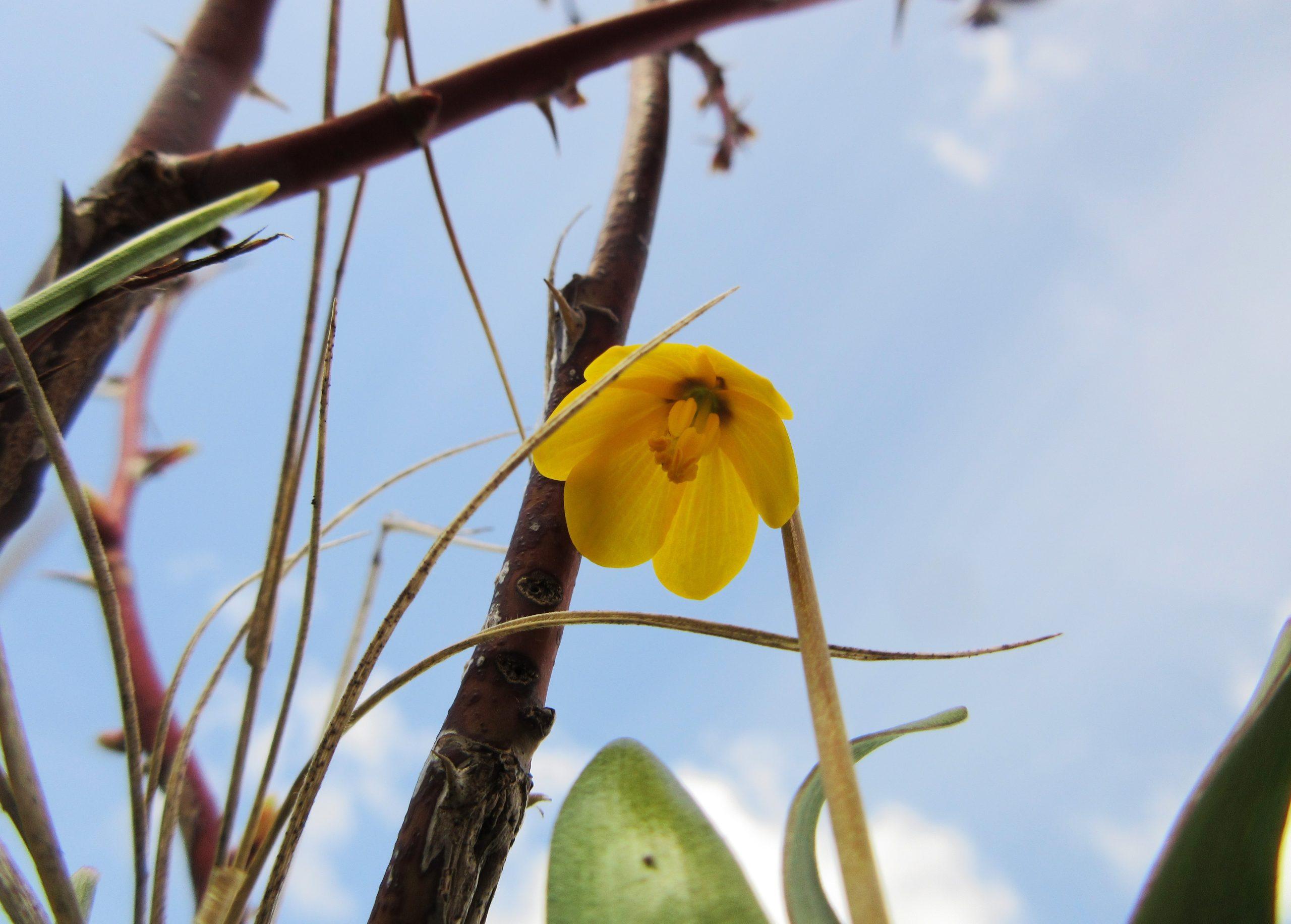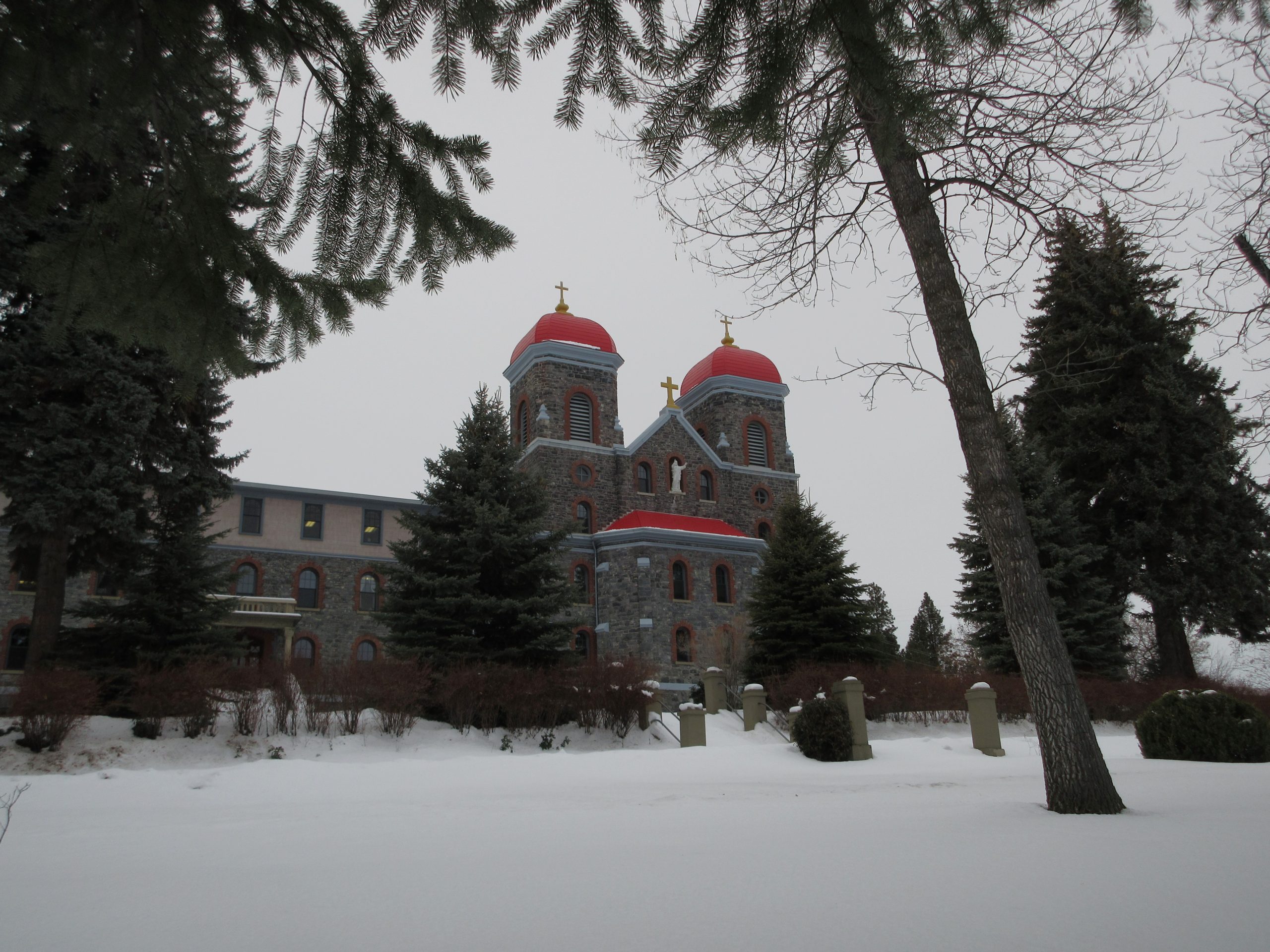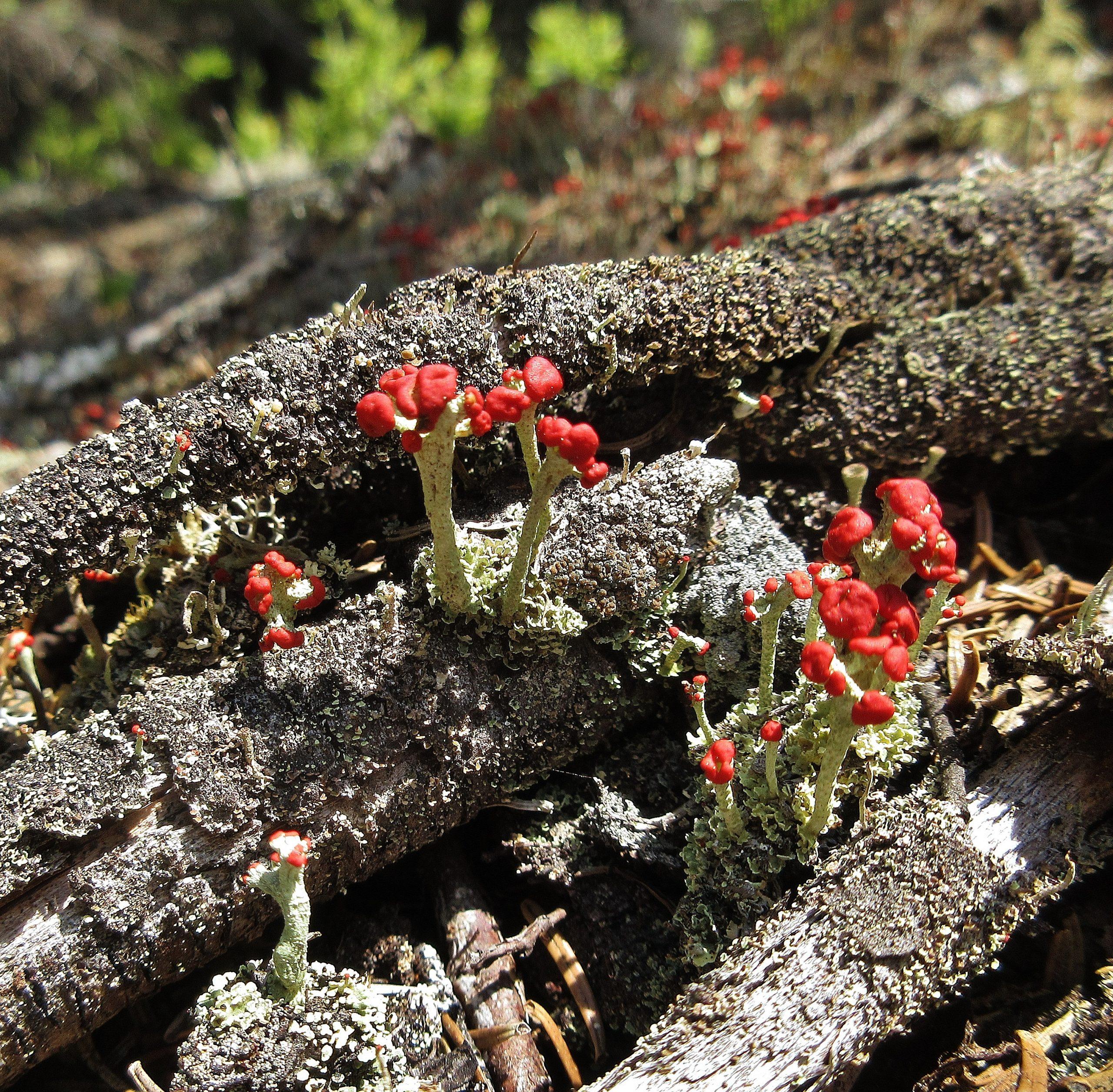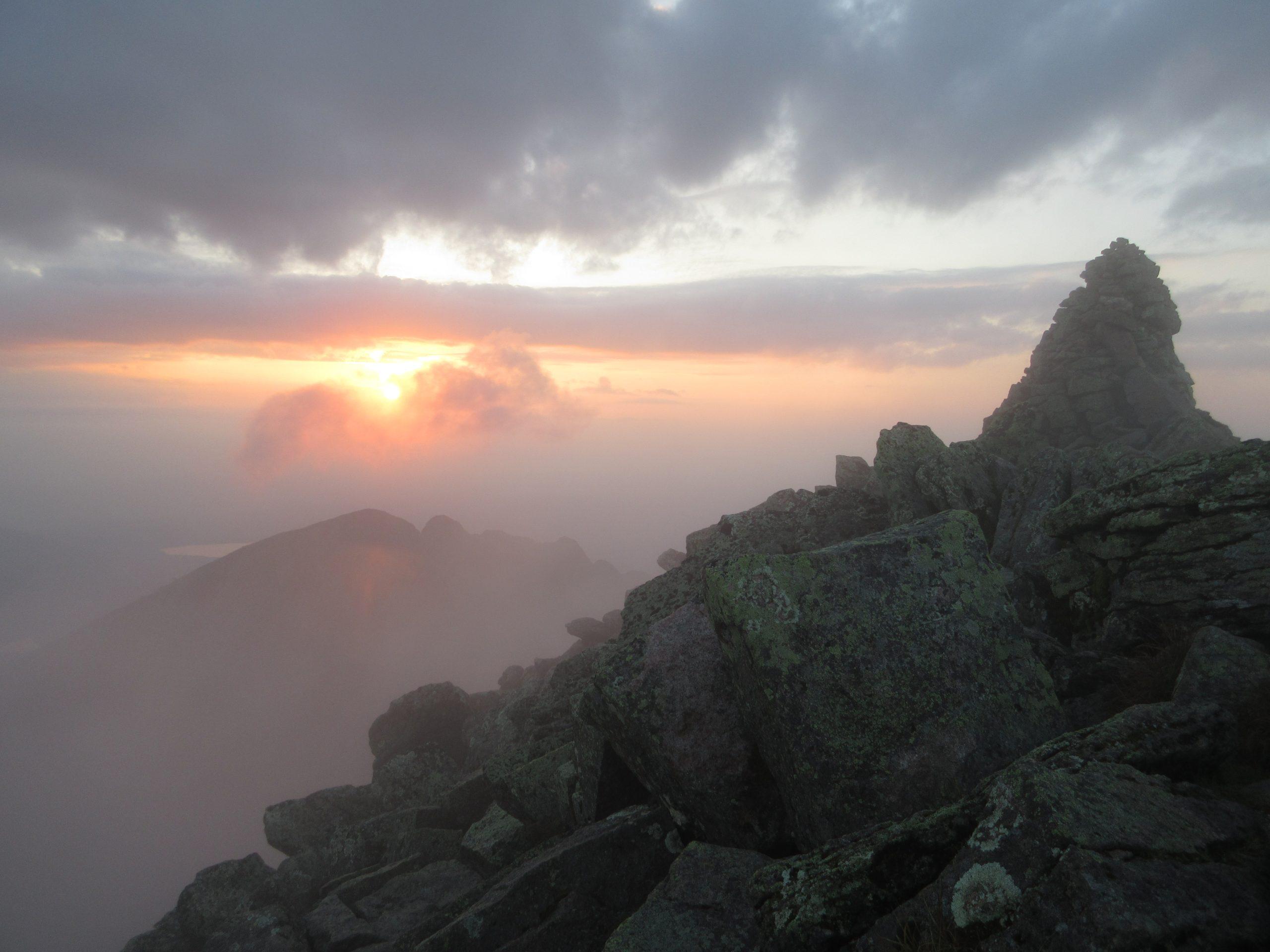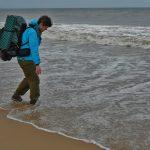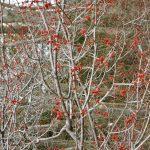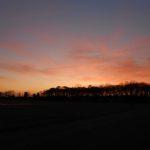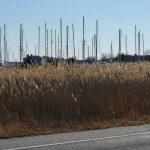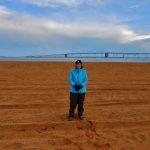Over the weeks since my last post, spring has slowly transformed the woods around my cabin.
The melting of winter’s snow and ice has had two major practical impacts on my life. First, my graywater system has thawed! You may recall that, as of January 25, it was frozen solid, and my sink drain had accordingly ceased to function. From that day onward, I had to collect my wastewater in a pot and carry it outside to dump.
I had no way of knowing when the system would thaw. I had just about resigned myself to a date sometime in June. But on March 21, the day after the Spring Equinox, I noted some hopeful signs. The water level in the drain pipe, which earlier was full all the way up to the sink, had dropped, and I smelled decomposing food odors emanating from the drain. I never thought I would welcome such a smell, but it suggested the system was thawing. To my disappointment, when I tried pouring down some hot water, it didn’t take much before the drain pipe filled again. A few weeks later, on April 15, I saw that the ground above the chambers was wet and spongy, so I tried again. This time, the water I poured down the drain disappeared – and the drain has been working ever since.
At the time I lost my drain, I was utterly dismayed. I envisioned the drainless months ahead with trepidation. But before long, I got used to emptying the wastewater pot in my sink. It became part of my routine, and it didn’t feel like a huge inconvenience. The experience taught me that many things we consider necessities are in fact luxuries. A valuable lesson – but I have to admit I’m very glad that particular learning experience is now behind me.
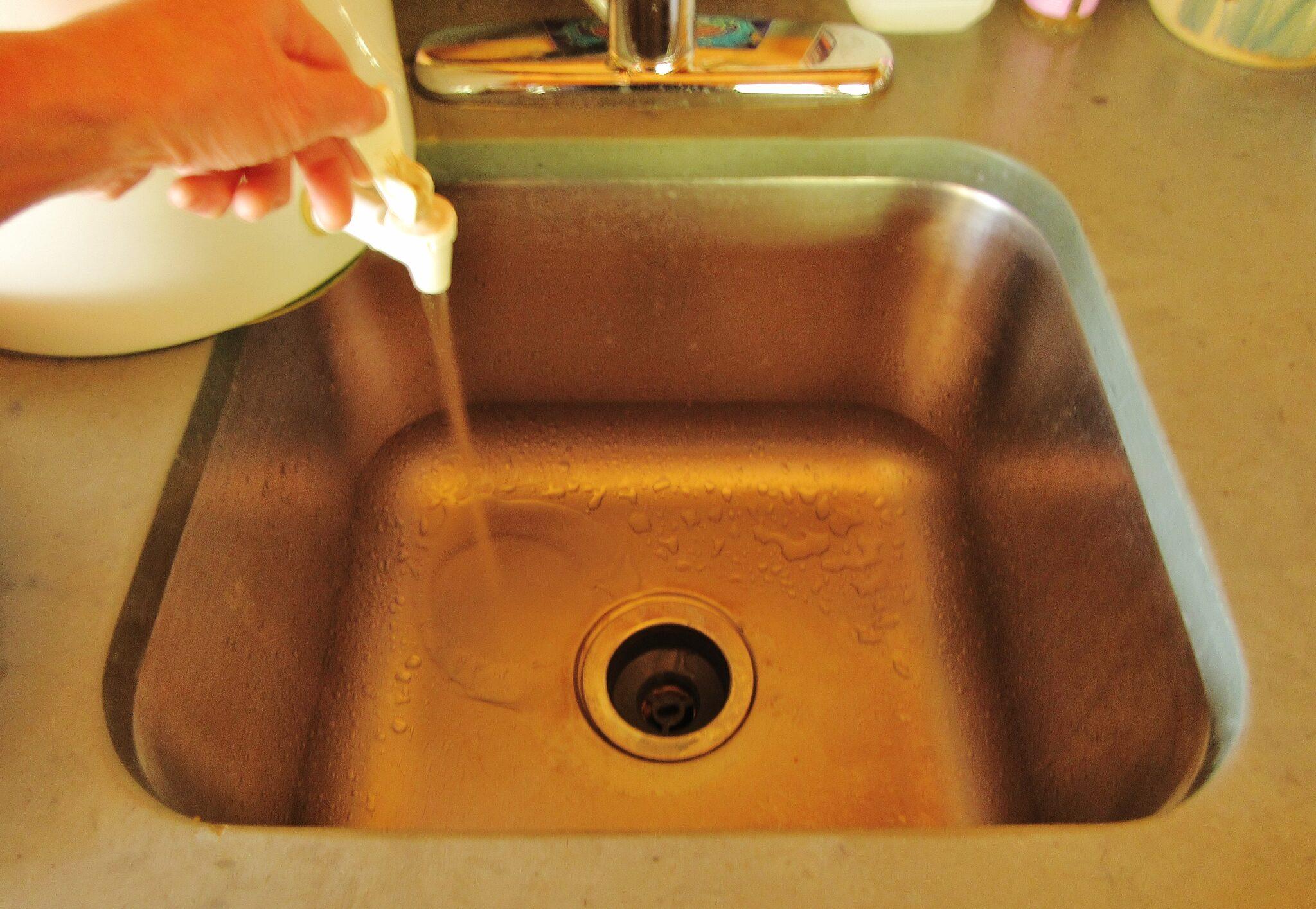
The second major practical effect of spring’s arrival was the opening of the unplowed gravel roads that lead to my cabin. On December 22, I drove my Subaru four and a half miles to a parking area on a plowed road, then hiked back to my cabin as snow fell heavily, accumulating to a depth of 11 inches. Over the wintry months that followed, I made only four trips to town, walking to my car on snowshoes, gear sled in tow. My fourth and final trip was at the end of March. On the last day of the month, I hauled two loads of food and supplies across the still-thick ice of First Roach Pond. I was ready to hunker down for the duration of mud season, when there is no good route into or out from my land.
In April, as the temperature warmed, the ice on the pond destabilized. Overland roads and trails devolved into a muddy, slushy mess, less than ideal for either snowshoeing or hiking, impassable both to snowmobiles and wheeled vehicles. When I checked my driveway on April 21, there were still patches of snow up to 8 inches deep, and in other spots, puddles as deep as 5 inches.
By then, the ice covering the pond had turned a sodden gray, and patches of open water were expanding. In the final week of April, the ice went out. On the twenty-ninth – four months and a week after my drive out on December 22 – I decided to give the roads a try. I walked to my car and drove back to my cabin. The gravel was still a bit soft in places, but my Subaru handled the trip without mishap.
And thus my four weeks of mud season isolation came to an end. I had mixed feelings. I’ve grown to love the peaceful solitude of this in-between period, when I know I will be the only human for miles around. On the other hand, my food supplies were dwindling. I still had plenty of canned goods, as well as dry foods such as flour, oatmeal, and rice. But I was down to my last egg and last stick of butter, and I longed for fresh fruits, vegetables, and salad. Access to the mainstream world does offer some advantages.
Plumbing and vehicular transportation are human concerns. But I share my land with many non-human species, who welcome spring’s lengthening light and warming temperatures in other ways.
As April progressed, my ears were alert for the calls and songs and drums of returning birds. One by one, new arrivals added their voices to the music of the woods: the honking of Canada geese; the lilting melody of the robin; the energetic burst of the song sparrow; the operatic aria of the winter wren; the transcendent flute of the hermit thrush; the irregular hammering of the yellow-bellied sapsucker; the sweet yet mournful-sounding whistle of the white-throated sparrow.
I caught a white-throated sparrow singing outside my cabin window about fifteen minutes before sunrise:
Birders like to come up with phrases that help them remember particular songs. This sparrow’s song is commonly rendered as “Poor Sam Peabody Peabody Peabody.”
After I recorded the video, I played it back to be sure I had captured what I wanted. The sparrow, still in the vicinity, interpreted the sound of his own voice as a rival male asserting his territorial rights, and promptly responded to the perceived challenge with another song of his own. I couldn’t resist playing the recording a couple more times, listening each time for the real bird’s response.
Over the years, I’ve encountered many birds in my backwoods neighborhood. Recently, I decided to comb through my notes and make a list of all the species I’ve heard or seen from the peninsula where my cabin is located, or from the Roach River between Second and First Roach Ponds. I was surprised by the length of my list: 66 species, plus four additional tentative identifications. I’m sure a real expert would have identified even more. (I’ll be happy to share the list with anyone who is interested.)
Birds aren’t the only musicians in the orchestra of spring. From dawn through the daylight hours, they’re certainly the chief performers. But as the day wanes, frogs take the lead, chorusing into the night from vernal pools and wetlands, proclaiming their eagerness to mate. In early May, as the snow still edging my wetland dwindled to a narrow strip, I began to hear the sputtery quacking of wood frogs and the whooping of spring peepers:
Though most birds retire when night falls, one iconic species joins the frogs in making the music of my spring nights. Loons laugh and wail and yodel as they sort out breeding territories. The loon’s wail is especially haunting: writer John McPhee said the Cree Indians described it as “the cry of a dead warrior forbidden entry to Heaven.” From what I’ve heard drifting over the pond, there are at least two pairs getting ready to nest.
When May began, the palette of my local woods remained mostly somber: the browns of fallen leaves and dried flower stalks; the browns and grays of still-bare deciduous trees and shrubs; the dark green of fir and spruce. I rejoiced when orange and red blossoms opened on maples. Then quaking aspens unfurled tender leaves of vibrant green. Birches and maples soon followed suit; the new maple leaves display rusty tints that foreshadow their autumn colors. Native flowers are emerging from the forest floor. Goldthread and painted trillium are already in bloom. Buds are swelling on wild lily-of-the-valley.

And so my second winter at my cabin has come to an end. Like the first, it seemed to fly by. To me, the months have been just about the right balance of coziness and adventure. The non-negotiable chores of off-grid life have kept me from getting lazy, and the occasional misadventure has challenged me to grow. Each day has brought new discoveries. The more intimately I get to know the woods and waters around me, the more deeply they become my home; the more its wild inhabitants feel like neighbors. Though I may leave these woods in body, they will forever remain entwined with my spirit.
An eagle update:
Long-term readers may recall that I’ve been monitoring an eagles’ nest, built in a tall pine on the north shore of the peninsula where my cabin sits. Last year, a resident eagle pair raised a chick there. Then, after the chick fledged, the nest partially collapsed. Last month, I was delighted to see that a pair of adult eagles were back at the nest and appeared to be rebuilding. About a week ago, when I went to check on the nest, a single eagle flew in and perched just above it. I had high hopes the second eagle was hidden within, incubating eggs. But those hopes were dashed when the eagle took off and a second bird joined it in flight. I don’t believe a mated pair would ever leave developing eggs unattended.
Though the eagles are apparently eggless now, I remain optimistic. As I understand the process, it takes about four months from the laying of an egg until an eaglet fledges. So there should still be time to lay eggs and raise a chick or two this year.
Come visit me in Monson!
On May 23, I’ll be moving to Monson to prepare the Appalachian Trail Conservancy Visitor Center for opening on June 4. If you pass through Monson on your way to Greenville or the North Woods, please do stop by and say hello. The center is housed in the blue Historical Society building on Monson’s main street. I’ll be there through October 10, from 8-11 AM and 1-5 PM, 4-5 days a week. Generally, I’ll be there Thursday-Monday (closed Tuesday and Wednesday), but on weeks with a Monday holiday, I’ll be off Thursday as well (closed Tuesday-Thursday). I have information about the A.T. and many other hiking trails in the region, from gentle to challenging; from easy-to-find, to some that are not even shown on maps. I’d love to help you plan an adventure.


